- Home
- Bill Bryson
Bill Bryson's African Diary Page 2
Bill Bryson's African Diary Read online
Page 2
Monday, September 30
Knowing of my interest in ancient pre-humans (because of a book I have been working on) Kentice set up a visit to the National Museum. There we met Dr Emma Mbua, the petite and cheerful chief paleoanthropologist. Thanks largely to the efforts of two generations of the Leakey family, the museum has the finest collection of early human remains in existence.
It is an exceedingly rare event when a human bone fossilizes—only about one in a billion does so—and even rarer when one is found. You could easily fit all the early human bones that have ever been discovered into the back of a small delivery van. If you include every last tooth and chip of ancient bone ever found, only about 5,000 individuals have contributed to the human fossil record. Five hundred of these are held in the Kenyan National Museum in what is aptly known as the Strong Room, a slightly oversized version of a bank vault, with a heavy steel door and thick windowless walls. It is the greatest single hoard in the world, more priceless by far than any collection of royal baubles. Almost never is a non-specialist allowed into this room. I was honored indeed.
All the specimens are kept in small wooden chests in cupboards lined up around the walls. For one giddy hour, Dr Mbua brought out one celebrated skull after another. Here was the first Homo habilis, found by Louis Leakey in 1964 and long thought to be our earliest direct ancestor. Then came the famous Australopithecus boisei, 1.6 million years old and found miraculously intact, lying on the ground in the open, by Louis’s son Richard in 1969. Then there was the extraordinary Turkana boy, whose nearly complete skeleton was found in northern Kenya in the 1980s and which at a stroke provided scientists with more Homo erectus bones than all the previous finds put together.
Dr Mbua’s most treasured relic was a 19-million-year-old skull of an ape known as proconsul. “It was sent to the British Museum for cleaning in the 1940s,” she said, “and it took us forty years to persuade them to return it.”
“Why?” I asked.
“They coveted it,” she said, smiling serenely, but hinting at levels of darkness in the world of paleontology that I hadn’t known existed. “Now we don’t let anything leave the museum, ever. They are too delicate and too precious. If you want to see any of these special things, you must come to Nairobi.” How glad I was I had.
The scarcity of human remains isn’t just because few bones become fossils, but also because precious few landscapes offer the right conditions to preserve fossils. The greatest of them is the Great Rift Valley, and it was there we headed next.
I had always imagined the Rift Valley as some kind of canyon—a comparatively confined space where your voice would echo off walls of rock. In fact, it is a mighty plain, a hundred miles across and four thousand miles long. It is immense, and startlingly sumptuous in its beauty. As you head south and west out of Nairobi there comes a place where the ground just falls away and there spread out below you is the biggest open space you have ever seen: the Great Rift Valley. It is an amazing sight—a pale green vastness interrupted here and there by dead volcanic craters, but otherwise infinite and flat and very hot looking.
We were headed for a place called Olorgesailie, 60 miles beyond the Ngong Hills on the valley floor. When we arrived, we stepped from the vehicle into a dry, oven-like heat, which was all the more startling after the comparative coolness of Nairobi. In 1919, a geologist named J.W. Gregory was poking around in the area when he came across an expanse of ancient and distinctive teardrop-shaped hand axes of a type known as Acheulean. In the 1940s, Louis Leakey and his wife, Mary, got around to excavating the site. What they found was that Olorgesailie was a kind of factory where these tools were made in incalculable numbers over about a million years, from 1.2 million to 200,000 years ago. But here’s the thing. The stones from which the axes were made aren’t found on the Rift Valley floor. They had to be brought there from two nearby mountains named Ol Esakut and Mount Olorgesailie, each about ten kilometers away. Why the early people went to such trouble and what exactly they used the tools for have long been a mystery. Acheulean axes were beautiful pieces of technology for the time, and each represented a lot of effort to create, but they weren’t outstandingly good for cutting or chopping or scraping—certainly not a great deal better than almost any random unshaped rock would be.
Yet for a million years early humans went to the considerable trouble of collecting and carrying large hunks of quartz and obsidian miles across a baking landscape to make them into axes at this one ten-acre site. More than this, the excavations showed that there was one area where axes were made and another where worn axes were brought to be re-sharpened. It was all amazingly organized.
Today thousands upon thousands of these stone tools are heaped and scattered everywhere around Olorgesailie, left where they were dropped hundreds of thousands of years ago by ancestors so remote from us that they weren’t yet even Homo sapiens. It is an extraordinary site. One other curiosity is that no human remains have ever been found at Olorgesailie. We have to guess who the early people were.
I know all this because a very bright and enthusiastic young man named Jillani Ngalla from the Kenyan National Museum conducted us around the site. Ngalla appeared to know everything there is to know about Olorgesailie, Acheulean tools, the Rift Valley, and early hominids, and yet he seemed awfully young for an authority. I asked him how long he had been a paleontologist.
“Oh, I’m not,” he said cheerfully. “I am an aspiring paleontologist. I’ve been accepted at the University of Pretoria,” he added with a touch of pride, “but sadly I don’t have the necessary funds.”
“How much would it cost?” I asked.
“Ten thousand US dollars.” He gave me an apologetic look, as if he had just said ten million.
“And do you have any hope of getting that kind of money?” I asked.
“As things stand at the moment,” he answered and considered the question carefully for a minute, “no.”
In the early evening we made our way to the modestly grand central railway station in Nairobi to catch the overnight sleeper to Mombasa.
Kenyan Railways has something of a tradition of killing its passengers. In just the past decade, a little over 200 people have died in accidents on its trains. The accident that seems to have attracted the most publicity in recent years was one in 1999 when the overnight Nairobi-to-Mombasa train jumped the rails at an interesting sounding place called “Man Eaters Junction,” in Tsavo National Park, killing 32 people.
The crew blamed brake failure. Kenya Railways blamed the crew. No one really knows what happened. The following year another 30-plus people were killed in two accidents, both involving runaway trains, in the space of four days. The biggest disaster of all was in 1993 when a train bound for Mombasa from Nairobi plunged off a bridge and into the “crocodile-infested” Ngai Ndeithya River, killing 140 people. Ngai Ndeithya means “God help us” in Kiswahili, which would seem to be a not inappropriate motto for the railway itself. Almost since the beginning, however, the train has been known as the Lunatic Express. Can’t think why.
Man Eaters Junction is so called, by the way, because in 1898 during the construction of the railway about 140 Indian workers were snatched and eaten by two lions (giving a whole new meaning to the term “Indian takeaway”). The railway’s chief engineer, an ex-army man named Lt. Col. John H. Patterson, spent months trying to lure the lions into a trap (often using understandably reluctant Indians as bait), but always failed. On one notable occasion a junior employee named C. H. Ryall sat up all night in an open railway carriage with a rifle trained on a pile of bait outside, but unfortunately nodded off. The lions ignored the bait and took poor Ryall instead.
Finally in early December, after nine months of frustration, Patterson managed to bag one of the lions. Three weeks later he shot and wounded the second one, which then bounded off into the bush. At first light the next morning he followed the trail of blood to the beast’s lair. Though severely wounded, the lion charged. Patterson fired both barrels of his gun,
and was nonplussed, to say the least, to find that the lion merely staggered sideways and then resumed coming for him. Turning to his rifle bearer for his backup gun, Patterson was additionally nonplussed to discover that the bearer was 50 feet away and climbing a tree. Patterson likewise followed, just managing to haul himself onto a branch, the lion snapping at his quivering flanks. There he snatched the gun from the cowering bearer and fired once more, and the lion at last fell dead. The fate of the bearer is not recorded, but I believe we may reasonably assume that he was not further entrusted with the custody of firearms.
The journey from Nairobi to Mombasa takes 13 hours, nearly all of it after dark, which is perhaps a mercy, all things considered. So long as it stays upright and settled on the rails, the train is quite wonderful. It was a little on the ancient side, to be sure, but we each had a snug private cabin, which looked comfortable enough, and the dining car was splendid, with a hearty three-course dinner and cheery, attentive service. Knowing the perils that lay ahead, we took the sensible precaution of anaesthetizing ourselves with many Tusker beers before, during and after dinner, but even so sleep was not to be found.
To begin with the beds were small and decidedly on the hard side, but it was the wild and extraordinary motions of the train that made even light dozing impossible. Normally I love overnight trips by train, but this was like trying to sleep through an earthquake. Even in its more tranquil spells, which were few, it was like being on one of those agitating conveyor belts that mining companies use to shake diamonds loose from piles of rubble. Because it was pitch dark outside, there was never any telling where we were, but the angle of the carriage made it evident that we were spending much of the night descending steeply. Every few hundred yards, or so it seemed, the driver would hit the brakes, setting off a chain reaction of collisions as each carriage slammed into the one ahead of it, followed a micro-instant later by the thuds and confused moans of people who have just been pitched out of bed. The experience would not have been a great deal different if they had put us all in a large barrel and rolled us to Mombasa.
Tuesday, October 1
And So We Stepped into the steamy morning heat of Mombasa, pleased to be back on solid ground. Our destination for the evening was the Driftwood Beachclub Hotel, a stylish but conspicuously underutilized establishment standing on the Indian Ocean at Malindi. A vehicle from the hotel was waiting to whisk us up the coast to Malindi. Our principal task for the day was simply to get in position to fly on to Dadaab and a big CARE refugee camp the next day, but we had much to do in the meanwhile.
First we drove to a beach hotel north of Mombasa where CARE people from all over Africa had gathered for a conference to thrash out a new five-year plan. There we dropped off David Sanderson, who was to address the conference before flying back to London, and picked up Nick Southern, CARE’s regional manager for Kenya, whom I had met in London, as you will recall, and who was to be our host and protector for the next five days. An old Africa hand, Nick has been in Kenya for most of the past 15 years and knows the country inside out.
With Nick collected, we resumed our journey up the coast, through a lush, tropical landscape of palm groves and endless sisal plantations (sisal is used to make rope, I was told) to a small resort called Watamu.
Watamu was tranquil to the point of being comatose. There were several good-sized hotels and associated businesses—diving shops and the like—but a decided paucity of holidaymakers. “Tourism has really taken a beating here,” Nick said, “especially the coastal resorts. If people want to see lions and giraffes, they still have to come to some place like Kenya, but if all they want is a beach holiday then they go to lots of other places.”
For a decade up to the mid-1990s, Kenya was a hot destination. International visitor numbers hit 850,000 in 1995, but then slumped to under 500,000 in 1997 amid a welter of bad publicity. Nearly everybody you meet can tell you some unnerving story about visitors coming to an unhappy end. Before I even came to Kenya I was told three different versions of a story about a German tourist who was either walking on a beach, sitting at an outdoor café or in a car at a traffic light with his arm out the window when someone lopped the arm off with a machete and ran off with the attached Rolex. The story is untrue, but that doesn’t matter. What matters is that people believe it.
“When people hear these things and then someone says, ‘Oh and by the way you have to take malaria tablets, too,’ a lot of them decide just to go to Spain,” Nick said. “It’s a shame because Kenya’s got so much going for it—beautiful countryside, lovely people, extraordinary wildlife, wonderful climate, great beaches. I mean, look,” he said and made a sweeping gesture across what was a setting of incomparable splendor: wide beach, nodding palms, bright sun, sparkling water.
We took a creaky glass-bottomed boat operated by two keen young men out to the reef about a quarter of a mile offshore and spent an hour admiring the large and colourful shoals of fish. “Virtually the whole of the coast is reef like this,” Nick said. “And they actually look after it pretty conscientiously. For all they do wrong, the Kenyans manage wildlife very well.” He gave a slight apologetic shrug. “You’re seeing a lot of bad things this week. I thought it might be nice to see something good.”
“Thank you,” I said.
“And the next thing,” he went on, “is really good. Have you ever heard of the Gedi ruins?”
“No,” I said without having to think.
“Not many people have. I think you’ll be impressed.”
The Gedi ruins are inland from Watamu and down a winding track through enclosing overgrowth. From the thirteenth to seventeenth centuries Gedi was a thriving but oddly secretive community hidden away in a jungly setting in what was then a remote nowhere along the coast between Malindi and Mombasa. The inhabitants, who were Muslim, traded with people from all over the world. Archaeologists have found beads from Venice, coins from China, an iron lamp from India, and scissors from Spain, among a great deal else. But nowhere in any written records in any language does Gedi or its industrious people appear. Somehow for four hundred years Gedi interacted with the world without being noticed, and no one knows how it managed to escape attention or why it chose to.
Gedi wasn’t rediscovered until the 1920s, by which time it was completely overgrown, but excavations since then have uncovered mosques, tombs, houses and a grand palace, spread across a 45-acre site. Monkeys run along the ruined walls, discreetly keeping an eye on visitors. The site still seems to half belong to the jungle, with mighty baobob trees growing up in what was once a busy lane or someone’s sitting room. At the end of the day, with long sun beams slanting through the forest, it was inexpressibly gorgeous. We were conducted around the site by Ali Abdala Alausy, the curator, a droll and cheerful man who was so clearly glad of visitors that he gave us what can only be called an exhaustive tour. There wasn’t an alcove or pediment to which we weren’t given a full history, not a pit or dwelling whose excavated contents weren’t thoroughly described. We left packed with knowledge and admiration, and ready for a very large drink.
We spent the night at the Driftwood Beachclub Hotel. The only other customers in the large dining room were a family of four at a distant table—white Kenyans on holiday, Nick supposed.
Everybody was tired after the sleepless train journey of the night before, but even so we were unusually subdued. I didn’t realize it at the time but this was because, with the exception of Jenny, who fears nothing, we were all quietly certain we were going to die in the morning.
Wednesday, October 2
A few years ago, I was on a scheduled flight on a 16-seater prop plane from Boston to my local airport in New Hampshire when the plane got lost in bad weather and couldn’t find the airport. For 40 minutes we flew around in a perplexed manner, occasionally dropping through the low clouds (which, I couldn’t help noticing, we shared with many mountaintops) before the pilot got his bearings, or lucky, and put us on the runway with a descent so steep that I sometimes still s
it upright in bed at 3 a.m. thinking about it. I vowed then that I would never go on another light aircraft. Then two years ago I flew in a light aircraft across Fiji almost, but not quite, ahead of the leading edge of the biggest tropical storm I ever hope to experience and I vowed then that really, absolutely and under no conditions would I set foot on a light aircraft again.
And now here I was about to fly 400 kilometers into bandit country in a charter plane in a Third World nation. I mentioned my reservations to Nick Southern at breakfast.
“I know just what you mean,” he said with feeling. “I’m petrified myself.”
“That’s not quite what I was hoping to hear,” I said. “Absolutely bloody petrified,” he repeated for emphasis.
“I was rather counting on you to tell me everything is going to be fine, and that these planes never crash.”
“Oh, no, they crash all the time,” Nick said.
“I know they do, Nick. But I was hoping that you would tell me that somehow in Kenya they don’t and that for some reason that hasn’t occurred to me the world’s most outstanding pilots come here to do charter work.”
Nick didn’t seem to be listening to me any longer. “Crash all the time,” he said. “Poor Richard Leakey lost both his legs in a plane crash in Kenya, you know.”
“I’d heard that,” I said.
“And he was one of the lucky ones,” he added enigmatically.
Dan, also a piteous flier, arrived at the breakfast table just then. He was as white as a sheet, a condition somewhat exacerbated by the fact that he had inadvertently brushed his teeth with sun cream. Then poor Justin Linnane turned up looking similarly ghostly. He was uneasy because he had never been up in a small plane before and now learned that his debut experience was to be in the company of the three most hysterical fliers in Africa. Only Jenny remained serene.

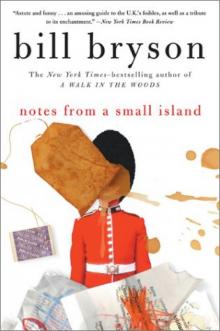 Notes from a Small Island
Notes from a Small Island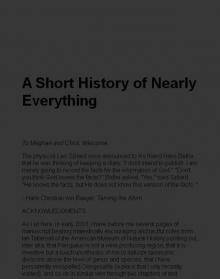 A Short History of Nearly Everything
A Short History of Nearly Everything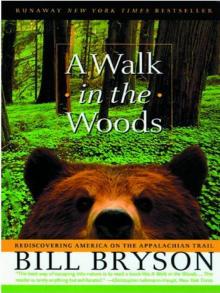 A Walk in the Woods
A Walk in the Woods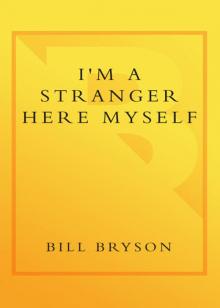 I'm a Stranger Here Myself
I'm a Stranger Here Myself The Mother Tongue
The Mother Tongue Shakespeare
Shakespeare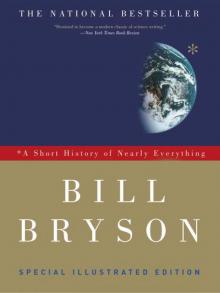 A Short History of Nearly Everything: Special Illustrated Edition
A Short History of Nearly Everything: Special Illustrated Edition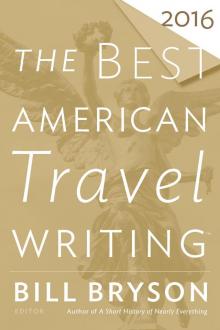 The Best American Travel Writing 2016
The Best American Travel Writing 2016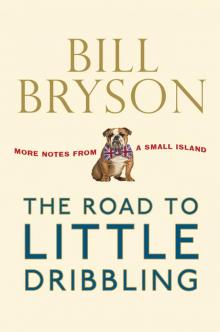 The Road to Little Dribbling
The Road to Little Dribbling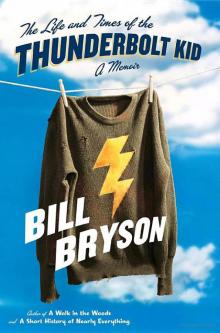 The Life And Times Of The Thunderbolt Kid: A Memoir (v5.0)
The Life And Times Of The Thunderbolt Kid: A Memoir (v5.0) Made In America
Made In America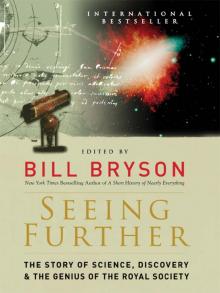 Seeing Further
Seeing Further Shakespeare: The World as Stage
Shakespeare: The World as Stage The Life and Times of the Thunderbolt Kid
The Life and Times of the Thunderbolt Kid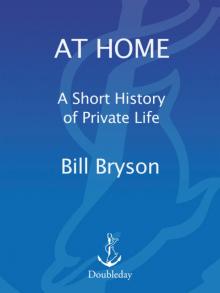 At Home
At Home Bryson's Dictionary For Writers And Editors (v5.0)
Bryson's Dictionary For Writers And Editors (v5.0) Neither Here Nor There
Neither Here Nor There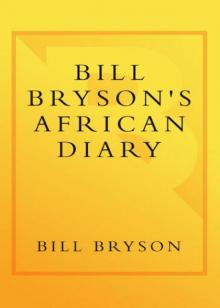 Bill Bryson's African Diary
Bill Bryson's African Diary